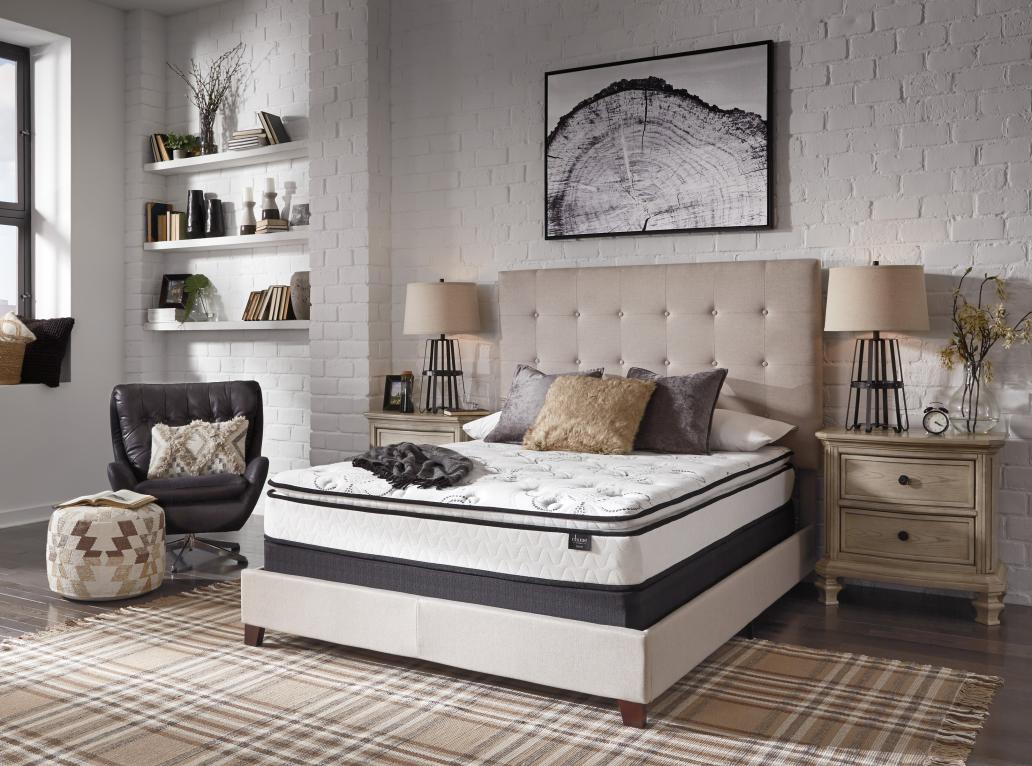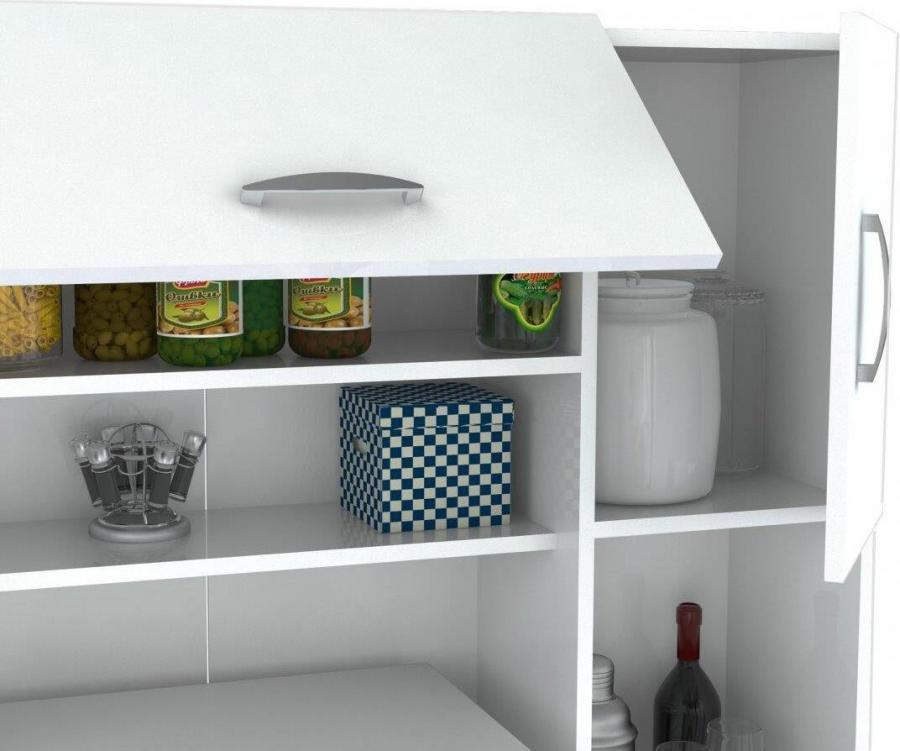
Shopping for a new mattress can be a daunting task. With so many options available to consumers, choosing the right mattress could take weeks - if not months! Whether you need dense foam in a mattress for back support or a softer foam because you and your partner are stomach sleepers, there is so much to consider. Our ultimate mattress buying guide for 2024 explains exactly how to choose between brands, sizes, materials, and types of mattresses. From innerspring mattresses with dozens of coils to gel mattresses with lots of foam layers, we address it all. Follow below to learn all about how to choose a mattress, where to buy and with which brands you can find the best deals in 2024.
How to Choose a Mattress in Seven Easy Steps
#1 Learn About All the Different Types of Mattresses Available
There are technically over a dozen types of mattresses to choose from. However, the three main types are spring, foam and hybrid. These are the most popular types of mattresses in the United States, though there are other options available like pillow tops. Within these three categories, there are a series of subcategories. For example, latex foam and memory foam are two individual subsets of the foam mattress category – each with slightly different properties, pros and cons. We explain the three main types of mattresses in further detail below.
Foam Mattresses
Made from layers of foam – per their name – foam mattresses are preferred by those who like to sink into their mattress and be enveloped by it. Foam mattresses first emerged in the late 20th century, when the brand Tempur-Pedic was top of the line. In her article “What to Know About Mattress Types” for The New York Times’ Wirecutter, Joanne Chen outlines the pros and cons of foam mattresses.
According to Chen, “different layers of foam provide varying levels of support…and cushioning.” The number and type of layers in foam mattresses varies based on the brand and cost. For example, Chen notes that “mattresses made with a memory foam top layer might provide a ‘hugging’ sensation.”
Alternatively, foam mattresses made solely from latex “sink less and may feel springy.” More expensive foam mattresses usually have more layers, while less expensive mattresses have fewer. In general, how comfortable you find a foam mattress depends “on the subtle transition between the top and the bottom layer.”
For Chen, the advantages of foam mattresses are that they provide “good pressure relief” and are “widely available online.” The disadvantages of buying a foam mattress are that they are more likely to retain heat, “may give off an unpleasant odor from off-gassing” and often have “poor edge support.”
Spring Mattresses
On the other hand, spring mattresses appeal to shoppers who favor a cooler sleep surface and lower upfront cost. The innerspring mattress is widely considered the most popular type of mattress in 21st century America. A spring mattress is very different from a foam mattress as it is filled with a layer – or layers – of coils. These coils are typically made from metal.
In her article “Memory foam vs. spring mattresses” for Medical News Today, Beth Sissons explains the differences between foam and spring mattresses. Information provided in Sissons’ article was fact-checked by Debra Sullivan, Ph.D., MSN, R.N., CNE, COI. When compared with foam mattresses, spring mattresses usually offer less pressure relief for the spine. However because they do not sink, spring mattresses could be a better fit for taller or heavier people.
The layers of the coil in a spring mattress also allow for better ventilation, making this type of innerspring mattress a cooling mattress. Some consumers might avoid spring or coil mattresses because they can be noisy. When the springs compress and release, the metal rings can scrape against each other. With foam mattresses, there are no coils and thus no resultant noise.
Similarly, coil mattresses can be painful and/or uncomfortable for consumers if they feel the springs through the top layer of padding. Purchasing a higher-quality spring mattress and replacing it every five to eight years usually eliminates this issue.
Hybrid Mattresses
Another common mattress type is the hybrid mattress, which is characterized by an innerspring core that is usually surrounded by foam. In his article “Mattress Types” for The Sleep Foundation, Daniel Noyed explains how hybrid mattresses compare to and differ from spring and foam mattresses. According to Noeyd, the unique design of hybrid mattresses “cultivate a balanced feel that works to obtain the positives of multiple components while minimizing their negatives.”
Unlike pure foam and spring models, most hybrid mattresses include an “innerspring core built with pocketed coils.” Surrounding the pocketed coils are either “memory foam, polyfoam, latex or textile fabrics” – depending on the brand. There might be a single layer of foam or multiple foam layers in a hybrid mattress. As always, more foam layers usually means more pressure relief for the spine.
These pocketed coils produce superior motion isolation in hybrid mattresses compared with spring and foam mattresses. As The New York Times’ Wirecutter writer Joanne Chen mentioned above, consumers often criticize foam mattresses for having poor edge control. The pocketed coils in hybrid mattresses increase both “edge support and bounce” in a way that far exceeds foam beds. Like spring mattresses – which also have coils – hybrid mattresses also breathe better than foam mattresses. If you want a firmer mattress that does not trap body heat, the hybrid mattress might be best for you.
Other Types of Mattresses
Of course, there are other types of mattresses available to consumers – many of which fall within a subgroup of the three main types listed above. Mary Marlowe Leverette explains in her article “14 Types of Mattresses to Know” for The Spruce. Within the foam subgroup, Leverette points to memory foam mattresses and those made from polyfoam, latex foam, and gel. Polyfoam is usually a firmer foam mattress.
However, polyfoam can be either a high density foam or a medium density foam, depending on how it is produced. Typically, memory foam is the least firm mattress while latex is considered a medium firm mattress. Within the coil or innerspring mattresses category, one might come across continuous coil innersprings, Bonnell coil innersprings, offset coil innerspring and Marshall coil mattresses. The latter is most comparable to a hybrid mattress.
In addition to spring, coil and hybrid mattresses, Leverette also identifies pillowtop mattresses, organic mattresses, waterbeds, air mattresses and adjustable bed mattresses. According to Leverette, an organic mattress is "made using organic wool or cotton fibers, recycled steel for the coils, and/or natural latex." One example of an organic mattress is the Avocado Green Mattress, which has become popular amongst conscious consumers in recent years. Some of these are only temporary – like air mattresses – and are not suitable substitutes for hybrid, spring and/or foam mattresses.
#2 Set a Budget
According to Alison Barretta in her article “How much does a mattress cost?” for Business Insider, mattresses can cost anywhere from a few hundred to a few thousand dollars. Generally, shoppers should “expect to pay $450 or less for a budget-friendly foam mattress, or at least $2,500 for a luxury latex mattress.”
In 2024, everything is a bit more expensive due to inflation, closed factories and the shipping crisis. As such, shoppers must temper their expectations slightly and add a bit to their budget if considering the prices Barretta outlines in her Business Insider article.
#3 Figure Out the Size, Firmness Level and Other Properties You Want
As mentioned above, hot sleepers might prefer a mattress made from more breathable materials. For those who sleep hot, innerspring mattresses might be preferable to all-foam mattresses because coil mattresses are considered the best cooling mattress type.
However, those who sleep hot and need support due to back pain might choose a medium-firm mattress that is a hybrid between foam and innerspring mattress. Alternatively, stomach sleepers might prefer a softer mattress like an all-foam mattress that easily conforms to their body and sleeping position. Pick a pillow top for an ultra-plush mattress.
In addition to firmness level and breathability, you must also consider the size of mattress you need. Whether XL full queen or king, the size of mattress you need will also depend on your sleeping position. If you sleep on your stomach with your legs and arms spread outward, you might want a queen size mattress - even if you sleep alone.
If you sleep next to a partner, infant or infant and partner, you might want a king or California king size bed. All in all, each consumer must determine their preferences and needs before figuring out which is the best mattress for them.
#4 Visit a Mattress Brand Showroom
In her article “How to Choose a Mattress” for The New York Times’ product review publication Wirecutter, Joanne Chen recommends visiting a mattress brand showroom. Chen writes that “it’s really hard to know whether you’ll like a mattress if you order it online without having tried it in person.”
Thankfully, Chen notes that many “brands have their own showrooms (such as Casper and Nest Bedding) or are sold in department or mattress stores. This way, “you can test them in person.” If possible, consumers should visit brand showrooms to test out other mattresses. Then, they can go home and surf the web to find the best deals for similar mattresses online.
#5 Lay on At Least Five Different Mattresses to Compare
Next, you must test out a series of different mattress types and brands to compare. This “Consumer Reports' Mattress Tests” video posted on YouTube can help you figure out the best ways in which to test mattresses in-store. How you test each mattress will depend greatly on how you sleep. If you sleep on your back, you should lay on your back when testing each mattress.
If you lay on one side, you should test each mattress by laying on that side. Consider the firmness, support and breathability of each mattress while laying there. Also, encourage your partner to lay down next to you to determine how much weight displacement each mattress has.
#6 Ask About a Trial Period or Refund Policy
Mattress brands, online marketplaces, and department stores usually offer a trial period or have a reasonable refund policy around big purchases - such as a new mattress to replace your old mattress. Whether you are unable to shop in person and test out the mattress or would simply prefer a mattress in a box you ordered online, it is important to check the company's terms. Some mattress brands and dealers allow buyers to take the mattress home, sleep on it for thirty days, and return it if they are unsatisfied.
Because department store conditions are much different from those in your bedroom, it can be difficult to decide on the best mattresses for you without actually sleeping. If you are at all unsure about the best mattress for you, try to find a brand that does offer a trial period. Similarly, if you think you might want to return the mattress in the future, be sure to check if the brand offers free shipping back to the company's warehouse.
#7 Consider Buying Your Mattress Online for a Better Deal
If budget is a big concern, consider buying your mattress online to stick to your desired price range. From the best memory foam mattress to the best organic latex mattresses and virtually all other mattresses, you can find absolutely whatever you are looking for online. After all, online shops now have a selection just as complete - if not more diverse - than department stores or brick-and-mortar mattress makers.
Whether you need a soft mattress or a super supportive mattress, e-commerce marketplaces like 1StopBedrooms have everything you could possibly need. They also carry a variety of accessories like that organic cotton cover or mattress protector you've been looking for.
How to Buy a Mattress on a Budget
As mentioned above, the best way to buy a mattress on a budget is to test out mattress types in person before searching the web for amazing deals. Online sources usually offer consumers lower prices closer to wholesale than department stores. However, shoppers must take care when shopping online. Shoppers should try to avoid inexpensive mattresses made from cheap materials that could be toxic and/or might not be fire-resistant.
Consumers should also avoid mattresses made from synthetic materials that could emit dangerous VOCs into their home. Similarly, shoppers must avoid cheap mattresses made from poorly formulated materials that degrade quickly. Always check verified buyer reviews and read the company’s return policy before purchasing a new mattress.
Determining Which Mattress Thickness is Right for You
The average mattress is between six and fourteen inches thick, but this varies based on the type of mattress and the manufacturer or brand. A thicker mattress does not necessarily mean a firmer or more supportive mattress. For example, memory foam mattresses tend to be thinner than coil or innerspring mattresses.
With a memory foam mattress, the comfort and base layers should be fairly thick, while other layers can be thinner without affecting the support or comfort of that mattress. Most consumers report finding mattresses measuring between eight and twelve inches thick to be most comfortable.
Top Mattress Brands of 2024
Some of the highest rated mattresses are now available online. From Sarah Shelton at US News to Leslie Sachs at Good Housekeeping, Casper mattresses are consistently rated the best mattress in a box. Mattresses from Saatva are often picked by reviewers as their favorite luxury mattresses. At 1StopBedrooms, the top rated mattress and top mattress brands of 2024 include those from the Capri Collection by Ashley and the Siddalee Collection by Furniture of America. Ashley’s Recharge Collection mattresses and Furniture of America’s Stormin Collection are also popular amongst consumers.
FAQs About Buying a Mattress in 2024
When is the best time to buy a mattress?
During the Holidays or Late Winter. In her article “When Is the Best Time to Buy a Mattress?” for NerdWallet, Courtney Neidel answers this question. According to Neidel, “some of the best times to buy a mattress include late winter, early spring and holiday weekends.” This is because when “new mattresses arrive, shoppers can save money by opting for an older model or a floor sample straight from the showroom floor.”
How to shop for a mattress?
Only Shop for a Mattress After Doing Your Research. In her article “How to Choose a Mattress” for Good Housekeeping, Leslie Sachs explains how people should shop for their new mattress. Sachs writes that “your sleep position, body type and personal preferences for the feel and materials will all play a role in determining which mattress is best.” You should also consider cost and existing sleep issues either you or your partner have.
What is the most comfortable mattress?
It Depends. The most comfortable mattress for you will not be the same as the most comfortable mattress for your friends – or even your partner. For example, someone who gets cold easily might be the most comfortable with a memory foam mattress. Alternatively, someone who sleeps hot would not want a memory foam mattress.
How much does a mattress cost?
$200 to $2,000. Depending on the brand, level of quality and type of materials, a mattress could cost anywhere between $200 and $2,000 for a brand new one. Of course, mattresses often go on sale at the end of winter – so shop during this time for the best deals of the year!
When do mattresses go on sale?
In the Winter and During Holidays. Mattresses usually go on sale in the late winter / early spring. This is when stores bring in new mattress styles and designs, putting older mattresses on sale. Holiday weekends – like Thanksgiving, the Fourth of July and New Year – also have great sales.





































